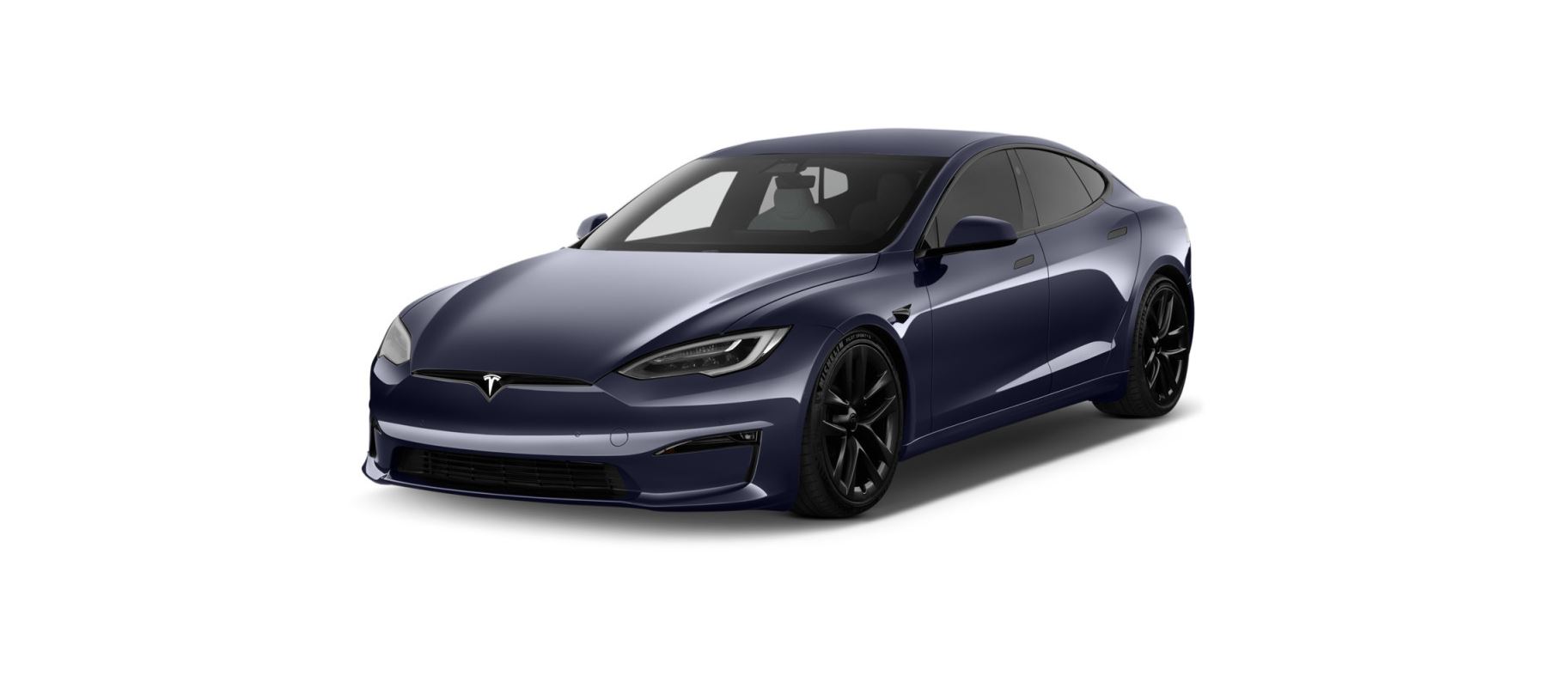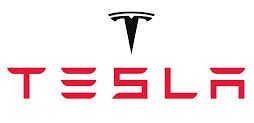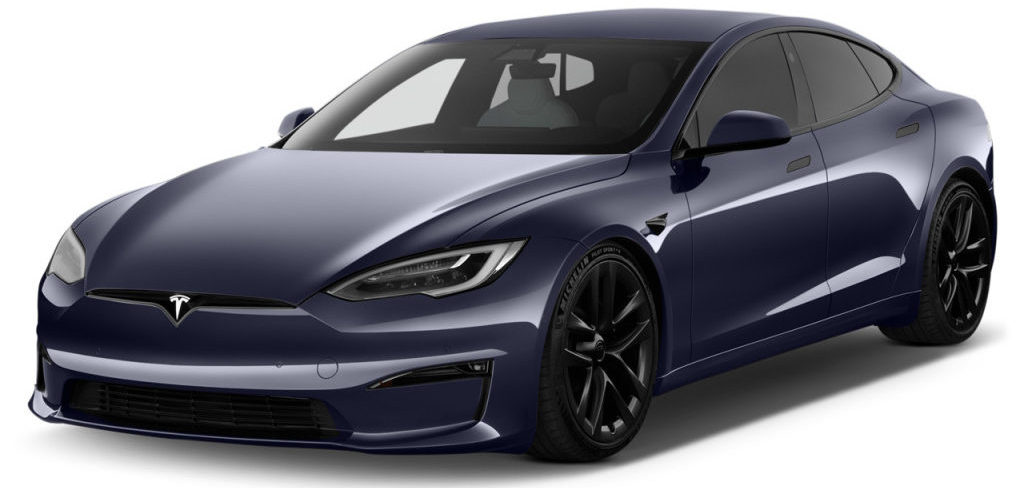  | A brake system fault is detected or the brake fluid level is low. See Braking and Stopping. Contact Tesla immediately. |
  | A brake booster fault has been detected. See Braking and Stopping. |
  | An ABS (Anti-lock Braking System) fault is detected. See Braking and Stopping. Contact Tesla immediately. |
  | A parking brake fault is detected. Contact Tesla. See Parking Brake. |
  | The parking brake is manually applied. See Parking Brake. |
  | Tire pressure warning. The pressure of a tire is out of range. If a fault with the Tire Pressure Monitoring System (TPMS) is detected, the indicator flashes. For a TPMS fault, contact Tesla. See Tire Care and Maintenance. |
  | A seat belt for an occupied seat is not fastened. See Seat Belts. |
  | Airbag safety. If this red indicator does not flash on briefly when Model S prepares to drive, or if it remains on, contact Tesla immediately. See Airbags. |
  | Front fog lights are on, if equipped. See Lights. |
  | Parking lights (side marker lights, tail lights, and license plate lights) are on. See Lights. |
  | Low beam headlights are on. |
  | High beam headlights are on. Illuminates when high beams are on but the Auto High Beam setting is turned off or if the Auto High Beam setting is turned on but is temporarily unavailable. See High Beam Headlights. |
  | High beam headlights are currently turned on, and Auto High Beam is ready to turn off the high beams if light is detected in front of Model S. See High Beam Headlights. |
  | High beam headlights are temporarily turned off because Auto High Beam is on and is detecting light in front of Model S. When light is no longer detected, the high beams automatically turn back on. See High Beam Headlights. |
  | This indicator flashes amber when the electronic stability control systems are actively minimizing wheel spin by controlling brake pressure and motor power. See Traction Control. If this indicator remains on, a fault is detected and you should immediately contact Tesla. |
  | If a fault is detected that reduces the performance of the air suspension system, this amber indicator light displays (see Air Suspension). If the problem persists, contact Tesla. |
  | If a fault is detected that disables the air suspension system, this red indicator light displays (see Air Suspension). Contact Tesla. |
  | Vehicle Hold is actively applying the brakes. See Vehicle Hold. |
  | Electronic stability control systems are no longer minimizing wheel spin. See Traction Control. |
  | Model S is in Transport mode and can roll freely. It does not automatically shift into Park when you exit. See Activate Transport Mode. |
  | A blue snowflake appears when some of the energy stored in the Battery may not be available due to cold weather conditions. During these cold weather conditions, charging rates may also be limited. If Model S is plugged in, you can heat your Battery by turning on climate control with the mobile app. The snowflake disappears when the Battery is sufficiently warm. |
  | Vehicle power is currently being limited because the energy remaining in the battery is low, the vehicle’s systems are being heated or cooled, or an error is detected by the drive inverter. |






